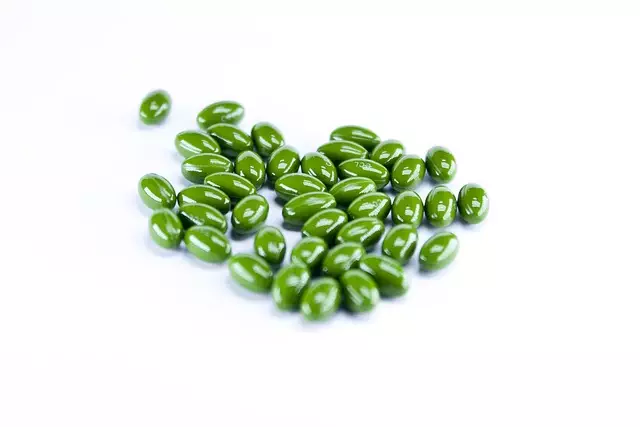Understanding wrinkle science is vital for selecting effective anti-aging treatments. Collagen and elastin fiber decrease with age, leading to fine lines and volume loss. Sun damage accelerates this process. Popular methods include retinol, chemical peels, microdermabrasion, Botox, and topical creams enriched with antioxidants and peptides. Advanced technologies like radiofrequency (RF) and intense pulsed light (IPL) offer safe, non-invasive options. Safety is paramount when considering treatments like Botox or fillers; consult a qualified dermatologist for personalized recommendations and tailored solutions combining professional procedures and home care routines to achieve and maintain youthful skin.
Looking for professional wrinkle solutions? Understanding the science behind wrinkles is the first step towards achieving youthful skin. This comprehensive guide explores various anti-aging treatments, from non-invasive methods like topical creams and serums to advanced technologies that reduce fine lines and wrinkles effectively. We’ll delve into safety considerations, help you choose the right treatment plan, and share tips for maintaining long-lasting results, making you feel confident in your skin’s appearance.
Understanding the Science Behind Wrinkles

Understanding the science behind wrinkles is key to selecting effective professional anti-aging treatments. Wrinkles form due to a combination of factors, primarily related to the aging process and sun exposure. As we age, our skin’s collagen and elastin fibers naturally decrease, leading to reduced skin elasticity and a loss of volume. This results in fine lines and wrinkles. Additionally, sun damage from UV rays accelerates this process by breaking down these essential proteins, causing premature aging.
Professional anti-aging treatments address these underlying issues through various methods, including topical medications, chemical peels, and injectables. Each approach targets specific concerns, such as stimulating collagen production, reducing existing wrinkles, or providing temporary yet significant volume restoration. By understanding the science, individuals can make informed decisions, choosing treatments that best suit their needs to achieve youthful-looking skin.
Types of Anti-Aging Treatments: A Comprehensive Overview

The quest for youthful skin has led to a plethora of anti-aging treatments, each promising remarkable results. From topical creams to surgical procedures, the world of cosmetic medicine offers diverse options tailored to different needs and preferences. One of the most popular and effective methods is retinol, a form of vitamin A that stimulates cell turnover, reduces fine lines, and brightens the skin’s overall complexion. Retinoids are widely used in over-the-counter products due to their ability to gently exfoliate and encourage collagen production.
Beyond retinoids, chemical peels have gained recognition as a non-invasive anti-aging treatment. These procedures involve applying chemicals to the skin to lift away damaged layers, revealing smoother and more even-toned skin below. Peels can range from mild to deep, each offering specific benefits for different signs of aging. Other advanced treatments include microdermabrasion, which physically exfoliates the skin using fine crystals or a special device, and Botox injections, known for their ability to temporarily paralyze muscles, reducing dynamic wrinkles and providing a more relaxed appearance.
Non-Invasive Methods for Youthful Skin

Non-invasive methods have revolutionized the way we approach anti-aging treatments, offering a multitude of options for achieving youthful skin without the need for extensive procedures. One popular and effective technique is the use of topical creams and serums enriched with potent antioxidants and peptides. These active ingredients help stimulate collagen production, improve skin elasticity, and protect against environmental damage, thereby reducing fine lines and wrinkles naturally.
Additionally, technologies like microdermabrasion and chemical peels have gained popularity for their ability to gently exfoliate the top layers of skin, uncovering a smoother, brighter complexion. These non-invasive procedures can enhance skin texture, minimize age spots, and provide a more even tone, making them excellent choices for those seeking subtle yet noticeable improvements in their skin’s appearance.
The Role of Topical Creams and Serums

In the quest for youthful skin, topical creams and serums play a pivotal role as key components in any anti-aging treatment regimen. These formulations are designed to address specific skin concerns related to aging, such as wrinkles, fine lines, and loss of elasticity. Packed with potent ingredients, they penetrate deep into the skin’s layers to stimulate collagen production, enhance cell renewal, and provide much-needed hydration.
The market abounds with options, from retinol-rich creams to peptide-infused serums, each claiming to offer significant benefits. Active ingredients like retinol, vitamin C, hyaluronic acid, and peptides are renowned for their ability to visibly reduce the appearance of wrinkles and enhance skin texture. Regular application can contribute to a more supple, radiant, and youthful complexion, making topical creams and serums indispensable tools in the pursuit of professional wrinkle solutions.
Advanced Technologies in Wrinkle Reduction

In the realm of anti-aging treatments, advanced technologies have emerged as game changers in the battle against wrinkles. One prominent method is the utilization of radiofrequency (RF) energy, which offers a non-invasive approach to skin tightening and rejuvenation. RF technology sends precise energy waves into the skin, stimulating collagen production and enhancing elasticity, thereby reducing the appearance of fine lines and wrinkles. This cutting-edge technique is often preferred for its minimal downtime and ability to target specific problem areas.
Another innovative solution lies in the field of photorejuvenation, utilizing intense pulsed light (IPL) to address various skin concerns, including wrinkles. IPL treatments work by emitting light energy that penetrates the skin’s upper layers, breaking up pigmented spots and stimulating collagen renewal. This results in a smoother, more youthful complexion. As technology advances, these anti-aging treatments continue to evolve, providing individuals with effective and safe options for achieving radiant, wrinkle-free skin.
Safety and Side Effects: What to Expect

When considering any anti-aging treatment, safety and side effects are paramount concerns. Professional wrinkle solutions, such as those offered by dermatologists, prioritize patient safety through rigorous testing and adherence to medical standards. While every individual’s experience can vary, common procedures like Botox and filler injections have a proven track record for minimal adverse reactions when administered correctly.
Most patients report only temporary and mild side effects, including redness, swelling, or discomfort at the injection site. These usually subside within a few days. Itchiness, bruising, and headaches are also possible but rare. More serious reactions, though uncommon, can occur. Therefore, it’s crucial to choose a qualified professional who can advise on potential risks tailored to your specific needs and health history.
Choosing the Right Treatment Plan

Selecting the optimal anti-aging treatment is a personalized journey, tailored to individual skin concerns and needs. The first step involves understanding your specific skin issues, such as fine lines, wrinkles, or loss of elasticity. Each concern may require a different approach, from topical creams with retinol or peptides for gentle at-home care, to more intensive procedures like chemical peels or injectables for deeper treatment.
Consulting a dermatologist is invaluable in this process. They can assess your skin and recommend suitable treatments, considering factors like skin type, age, and lifestyle. A comprehensive approach often combines various techniques—for instance, pairing topical therapies with regular facial massages to boost circulation and enhance product absorption. Remember, consistency is key; choosing the right plan involves long-term commitment for effective anti-aging results.
Maintaining Long-Lasting Results

Maintaining long-lasting results is a key consideration in any anti-aging treatment regimen. To ensure your skin’s improved condition persists, it’s crucial to stick to a consistent routine and choose products that deliver on their promises. Professional treatments offer a head start by addressing deep-set wrinkles and age spots with advanced technologies like laser therapy and chemical peels. However, post-treatment care is equally vital. Daily application of high-quality moisturizers, sun protection, and continued use of other anti-aging topicals can significantly extend the life of your results.
A well-maintained skin care routine doesn’t just maintain your current progress; it also prevents future damage. Regular exfoliation helps remove dead skin cells that can clog pores and accelerate aging. Additionally, incorporating antioxidant-rich serums into your regimen fights free radicals, which are responsible for many signs of aging. By combining professional treatments with a diligent home care routine, you can achieve and maintain long-lasting, youthful-looking skin.
